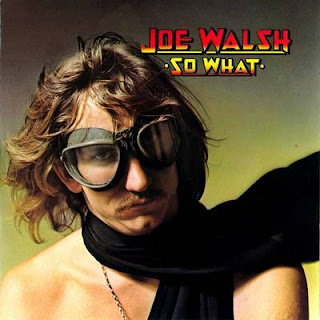The song was co-written with bassist Terry Trabrandt, although the credits list the spelling as “Trebrandt.” Trabrandt was a member of an Ann Arbor, Michigan garage band The Rationals and later joined Guardian Angel. Trabrandt died 13 months ago in Florida of a heart attack.
Although Trabrandt didn’t play on this track, his contribution to a song recorded twice by Joe Walsh is noted. Besides Walsh, Barnstorm included Kenny Passarelli on bass, and Joe Vitale on Drums. This is the classic version of the song and is the best known cut on this LP.
1974 Version from “So What’
Over a minute shorter than the original, the remake of “Turn to Stone” is a little less raw than the original.
This version features some of producer Bill Szymczyk’s clients on back-up vocals including Dan Fogelberg and Eagles’ members Don Henley, Glen Frey, and Randy Meisner. Within a year, Walsh was Bernie Leadon’s replacement in the Eagles.






















